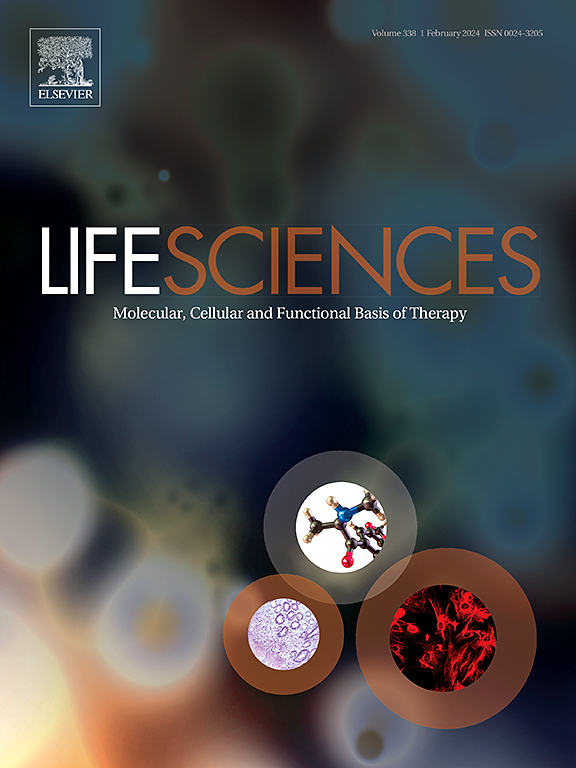A novel immunological perspective on female-specific cancers: Exploring the signaling pathways of tertiary lymphoid structures and their clinical applications
IF 5.1
2区 医学
Q1 MEDICINE, RESEARCH & EXPERIMENTAL
引用次数: 0
Abstract
Female-specific cancers, including breast, cervical, and ovarian cancers, are significant contributors to global morbidity and mortality. Despite advancements in conventional treatment modalities, challenges such as recurrence and therapeutic resistance remain prevalent, highlighting the urgent need for novel therapeutic strategies. Tertiary lymphoid structures (TLS), which act as immune microstructures within the tumor microenvironment, have emerged as key regulators of antitumor immunity. Increasing attention has been directed toward understanding their presence and functional roles in gynecological malignancies. Effective assessment and quantification of TLS can aid in evaluating clinical outcomes for patients with gynecological cancers. Current research has focused on the mechanisms driving TLS formation, techniques for their assessment, and therapeutic strategies aimed at promoting their development. This review comprehensively examines the distribution, structural characteristics, and functional roles of TLS in female-specific cancers, emphasizing their ability to activate localized immune responses through signaling pathways such as NF-κB, STAT3, and Wnt. These pathways play key roles in regulating TLS formation, immune cell infiltration, and the modulation of antitumor immunity. This is the first review to systematically explore the interaction between TLS and hormone signaling, particularly estrogen and progesterone, within tumor microenvironments of breast and ovarian cancers. Furthermore, the clinical potential of TLS is explored, highlighting its use as a biomarker for predicting therapeutic efficacy and disease prognosis and its role in guiding novel immunotherapeutic strategies. By systematically analyzing the signaling pathways and immune regulatory mechanisms associated with TLS, this review provides a strong scientific foundation for the development of innovative immunotherapies targeting gynecological cancers.

女性特异性癌症的新免疫学视角:探索三级淋巴结构的信号通路及其临床应用
女性特有的癌症,包括乳腺癌、宫颈癌和卵巢癌,是全球发病率和死亡率的重要因素。尽管传统治疗方式取得了进步,但诸如复发和治疗耐药性等挑战仍然普遍存在,因此迫切需要新的治疗策略。三级淋巴样结构(TLS)作为肿瘤微环境中的免疫微结构,已成为抗肿瘤免疫的关键调节因子。越来越多的关注已经指向了解他们的存在和功能作用在妇科恶性肿瘤。有效地评估和量化TLS有助于评价妇科肿瘤患者的临床预后。目前的研究主要集中在TLS形成的机制、评估技术和促进其发展的治疗策略上。本文综述了TLS在女性特异性癌症中的分布、结构特征和功能作用,强调了其通过NF-κB、STAT3和Wnt等信号通路激活局部免疫反应的能力。这些通路在调节TLS的形成、免疫细胞的浸润和抗肿瘤免疫的调节中起关键作用。这是第一次系统地探讨乳腺癌和卵巢癌肿瘤微环境中TLS与激素信号,特别是雌激素和黄体酮之间的相互作用。此外,本文还探讨了TLS的临床潜力,强调了其作为预测治疗疗效和疾病预后的生物标志物的作用,以及它在指导新的免疫治疗策略中的作用。本文通过系统分析与TLS相关的信号通路和免疫调控机制,为开发针对妇科肿瘤的创新免疫疗法提供有力的科学依据。
本文章由计算机程序翻译,如有差异,请以英文原文为准。
求助全文
约1分钟内获得全文
求助全文
来源期刊

Life sciences
医学-药学
CiteScore
12.20
自引率
1.60%
发文量
841
审稿时长
6 months
期刊介绍:
Life Sciences is an international journal publishing articles that emphasize the molecular, cellular, and functional basis of therapy. The journal emphasizes the understanding of mechanism that is relevant to all aspects of human disease and translation to patients. All articles are rigorously reviewed.
The Journal favors publication of full-length papers where modern scientific technologies are used to explain molecular, cellular and physiological mechanisms. Articles that merely report observations are rarely accepted. Recommendations from the Declaration of Helsinki or NIH guidelines for care and use of laboratory animals must be adhered to. Articles should be written at a level accessible to readers who are non-specialists in the topic of the article themselves, but who are interested in the research. The Journal welcomes reviews on topics of wide interest to investigators in the life sciences. We particularly encourage submission of brief, focused reviews containing high-quality artwork and require the use of mechanistic summary diagrams.
 求助内容:
求助内容: 应助结果提醒方式:
应助结果提醒方式:


